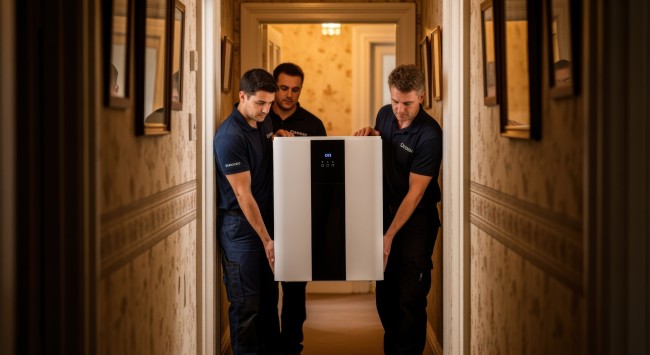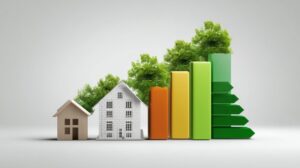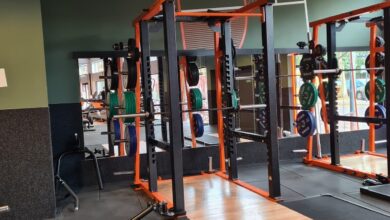How a Home Retrofit Can Cut Your Energy Bills

Many homeowners want to reduce their energy costs while keeping their properties comfortable throughout the year. One of the best ways to achieve this is through a home retrofit, which involves upgrading your house with materials and systems that improve its energy performance. With the right improvements, you can enjoy warm homes, lower bills, and reduced dependence on fossil fuels.
What Is a Home Retrofit?
A home retrofit focuses on targeted home improvements that lower energy usage without rebuilding the entire property. It involves a combination of home upgrades designed to enhance thermal performance and reduce energy waste.
Common retrofit measures include adding wall insulation, roof insulation, or loft insulation, sealing air leaks, replacing old windows, and upgrading heating and cooling systems. Some homeowners also install renewable energy systems, such as solar panels or modern hot water systems powered by renewable energy.
These changes by a reliable retrofit installer make a home more comfortable and environmentally friendly while reducing monthly running costs. They also contribute to a greener future by cutting carbon emissions and improving overall energy performance.
Why Energy Efficiency Matters
Energy efficiency is about more than saving money. It is also about improving comfort, protecting health, and promoting sustainability. Homes that lose heat through poorly insulated walls, roofs, or windows cause heaters and air conditioners to work harder, which wastes energy. A well-insulated home maintains a stable indoor temperature, creating a more pleasant environment and reducing the strain on your appliances.
Good insulation also helps to prevent damp and mould, which can affect both air quality and structural integrity. A properly insulated home feels warmer in winter and cooler in summer, without excessive reliance on heating or cooling systems. Furthermore, by using renewable energy instead of fossil fuels, you can lower your carbon footprint and ensure your home aligns with future building standards.
Key Retrofit Upgrades
A full retrofit project does not need to happen all at once. Many homeowners choose to begin with smaller, cost-effective improvements before moving on to larger upgrades. Each step makes a difference to your home’s energy performance.
1. Insulation for comfort and savings
Insulation is one of the most effective ways to make a property more energy-efficient. Many older buildings lack adequate wall insulation, roof insulation, or loft insulation, allowing heat to escape in winter and enter in summer.
Adding insulation made of fibre, foam, or cellulose improves thermal performance and keeps rooms at a steady temperature. This helps your heating and cooling systems work more efficiently, leading to noticeable savings on energy bills. Well-insulated homes are also less likely to suffer from damp and mould, as they retain heat and manage moisture better.
2. Efficient heating, cooling, and ventilation
Heating and cooling account for a large portion of most households’ energy usage. Upgrading to a high-efficiency system and installing smart thermostats can greatly reduce consumption.
Equally important are ventilation systems, which circulate fresh air and help control humidity levels. A proper ventilation setup can prevent condensation, damp and mould, improving both comfort and indoor air quality.
3. Renewable energy and smart controls
Installing renewable energy systems helps homeowners generate clean electricity and reduce reliance on fossil fuels. In some regions, it is possible to sell surplus energy back to the local grid, providing long-term financial benefits.
Smart home technology also contributes to energy efficiency. Automated lighting, thermostats, and timers help control energy usage by adjusting settings based on your daily habits, ensuring that no energy is wasted when it is not needed.
Financial and Long-Term Benefits
A well-planned home retrofit can lower energy bills significantly, depending on the upgrades carried out. Even small cost-effective improvements, such as sealing air leaks or improving insulation, can produce immediate savings.

Over time, energy-efficient systems last longer, perform better, and require fewer repairs. Many governments offer grants, rebates, or tax credits to encourage homeowners to invest in energy efficiency. Improving energy performance and adding renewable energy systems can also increase the value of your property while ensuring compliance with modern building standards.
Planning Your Retrofit
Before starting, it is helpful to arrange an energy audit. A professional assessment can show where your home loses energy and identify which home upgrades will provide the greatest benefits.
Plan your full retrofit project in stages. Begin with smaller tasks such as replacing bulbs with LEDs, fitting draught excluders, or sealing window gaps. Then move on to more substantial projects like upgrading heating systems or adding roof insulation.
Working with qualified contractors who understand energy-efficient design and local building standards is essential. They can ensure that every upgrade is carried out safely and effectively. You can also ask about mass retrofit programmes or local incentives that make insulating homes more affordable and accessible.
Conclusion
A home retrofit is a smart investment that improves comfort, reduces energy bills, and supports a more sustainable future. By focusing on cost-effective improvements, better ventilation systems, and reliable renewable energy systems, homeowners can create warm homes that meet modern building standards while cutting dependence on fossil fuels and ensuring long-term value.



